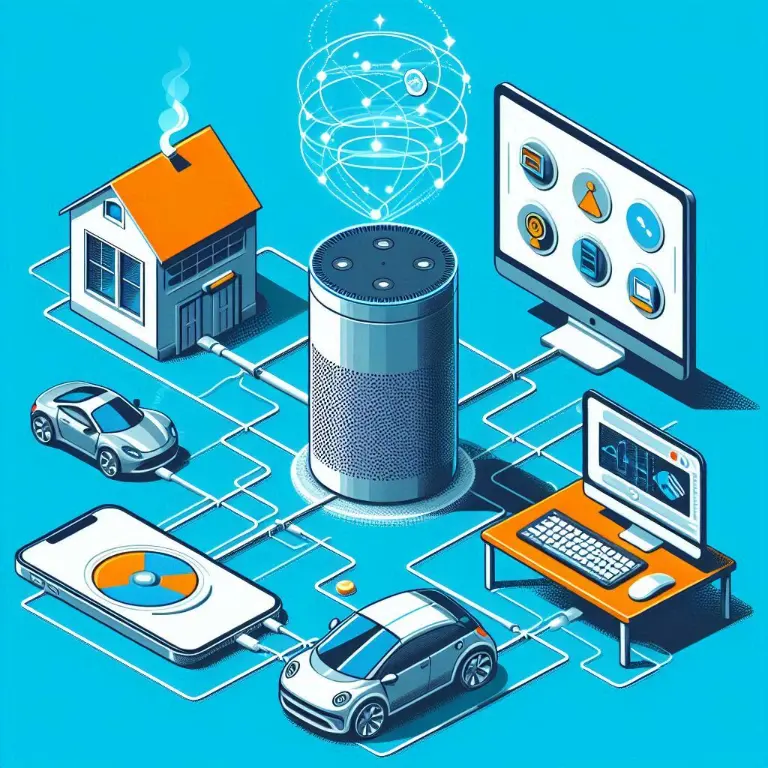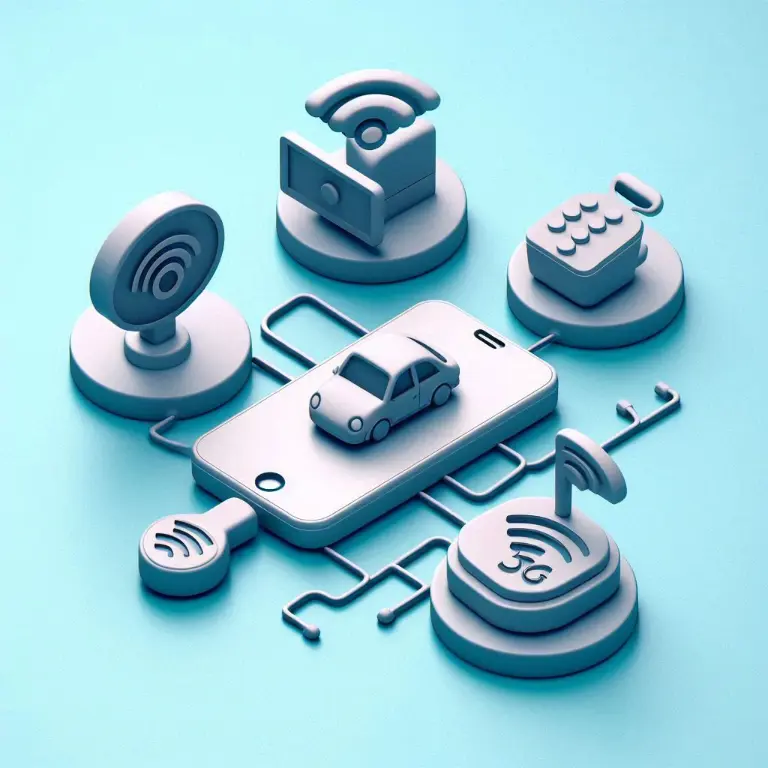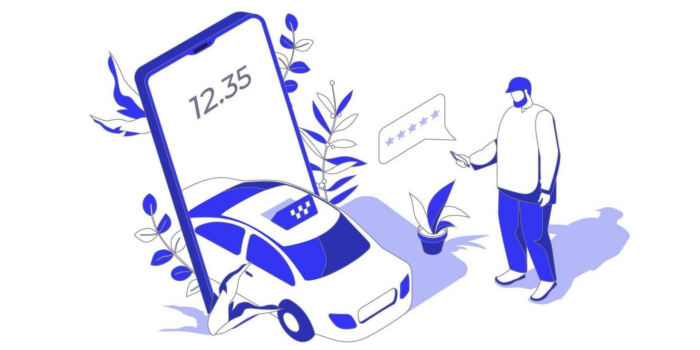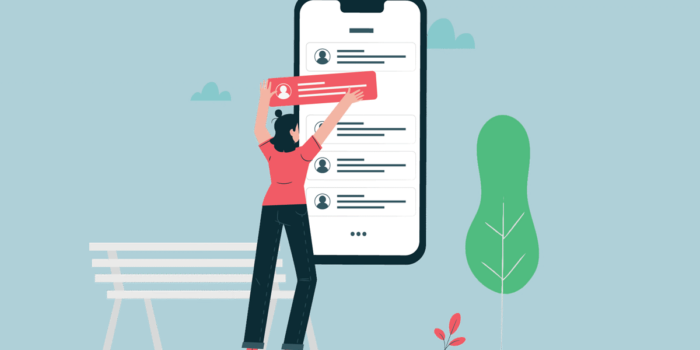Imagine this: You’re on your way home from work, and your smartphone sends a signal to your thermostat to adjust the temperature to a cozy 72°F. As you pull into the driveway, your garage door automatically opens, and your smart LEDs light your path. No, this isn’t a scene from a sci-fi movie, but the reality of today, thanks to the advent Internet of Things, or IoT in Malaysia.
According to a recent report by Statista, the number of IoT-connected devices is expected to reach 30.9 billion units by 2025, up from 13.8 billion in 2021.
This explosion of smart devices is not just making our lives easier; it’s revolutionizing the way mobile apps are developed, offering limitless opportunities for businesses to engage with their users in meaningful ways.
So, what does the integration of IoT in mobile apps mean? How can businesses leverage IoT in Malaysia to create more dynamic, user-centric applications? Let’s delve into this transformative landscape from the ground up.
The Tapestry of IoT: Every Thread Counts

You can think of IoT as a grand tapestry woven with threads of innovation and technology. Each thread has its own hue and texture, giving them a unique touch. Let’s try to understand these with examples:
- The Smart Gadgets: These are your smart bulbs, thermostats, and even your fridge that texts you when you’re out of milk. They’re the show-stoppers, the ones that get all the attention.
- The Puppet Masters: The apps on your phone that make the magic happen. They’re the conductors of this digital orchestra, cueing each device at just the right moment.
- The Invisible Threads: Wi-Fi, Bluetooth, Zigbee—these are the unsung heroes of the game. They’re the veins that carry the lifeblood of data, keeping the heart of your smart home beating.
Applications of IoT in Malaysia that Make You Go ‘Wow!’
- Home, but Smarter: Imagine walking into a room and the lights adjust to your mood, the thermostat knows your sweet spot, and your favorite playlist starts playing. Would your customers not want this special treatment?
- Retail Therapy, Upgraded: Forget hunting for deals. The deals find you. As you walk through aisles, your phone buzzes with personalized offers.
- Healthcare, but Not as You Know It: Your smartwatch isn’t just counting steps; it’s monitoring your vitals and can alert your doctor if something’s off. How about that?
Did you know that according to Statista, the global IoT market is expected to reach $1.6 trillion by 2025? That’s a lot of smart toasters.
How IoT and Mobile Apps Work Together: A Technical Insight

The advent of IoT in Malaysia and mobile apps is changing the very fabric of modern technology ecosystems. At its core, the IoT is about interconnected devices that collect and share data. Mobile apps act as the interface through which users can interact with these devices.
- Data Transmission Protocols
IoT devices often rely on protocols like MQTT or CoAP for efficient, low-latency data exchange. Mobile apps utilize APIs to communicate with these protocols, translating user inputs into machine-readable commands or data.
- Cloud Infrastructure
The data collected from IoT devices is often sent to a cloud-based server. Mobile apps can then fetch this data for analytics, monitoring, or to provide user-specific services.
- Real-time Monitoring
An increasing number of homes are fitted with IoT in Malaysia; we’re talking about your smart home system. Apps can provide real-time updates from IoT sensors. For example, a smart home app could give you live temperature readings or alert you when a door is opened.
Understanding New Business Models
1. Subscription Services
The IoT-mobile app combo can be considered a goldmine for subscription-based services. Imagine a smart coffee maker that knows when you’re running low on beans and automatically orders a refill. With a monthly subscription, you will never have to worry about running out of coffee again. This creates a recurring revenue stream for businesses and a hassle-free experience for consumers.
2. Data-Driven Decisions
Businesses can utilise the data collected from IoT devices to make informed decisions. For instance, a smart gym could use data from connected equipment to understand peak usage times, allowing it to optimize staffing and maintenance schedules accurately. This kind of data-driven decision-making can significantly improve operational efficiency. In fact, a study by McKinsey predicts that business-to-business applications will capture nearly 70% of the IoT’s potential economic impact in the next 2 years.
3. Pay-Per-Use Models
IoT in Malaysia also enables more flexible pricing models, like pay-per-use. Consider a smart parking lot that charges you only for the time your car occupies a space, all managed through a mobile app. This model can be more cost-effective for consumers and can maximize revenue for businesses during peak times.
4. Personalized User Experiences
IoT has enabled hyper-personalization in mobile apps. For instance, a smart car app could adjust the vehicle’s settings based on the driver’s preferences, from seat position to climate control. This level of personalization can be a highly profitable unique selling point, adding to customer loyalty.
4 Life-Changing IoT Examples for Mobile Apps
1. Healthcare
Telemedicine and Remote Monitoring Telemedicine apps integrated with IoT devices like heart rate monitors and glucose meters are changing healthcare forever. These apps allow doctors to monitor patient’s vital statistics in real time, leading to more precise diagnoses and personalized treatment plans. According to a study by MarketsandMarkets, the global telemedicine market is expected to reach $55.6 billion by 2025. The synergy of IoT in Malaysia and mobile apps will play a vital role in this growth.
2. Industrial Automation
By streamlining operations, IoT mobile apps in industrial settings are optimizing manufacturing processes end-to-end. Sensors on machinery can send data to mobile apps, allowing for real-time monitoring of equipment health. This leads to timely maintenance, reducing downtime, and increasing productivity. According to a leading study by Deloitte, companies that have adopted IoT in manufacturing have seen a 28% increase in revenue in the past years.
3. Smart Homes
IoT in Malaysia is also commonly utilised in homes via smart home technology Energy Management and Security Smart home apps connected to IoT devices like thermostats, lights, and security cameras are making homes more energy-efficient and secure. For instance, the Nest Learning Thermostat learns your schedule and adjusts the temperature accordingly, saving up to 15% on heating and cooling bills. [This is not a paid promotion, btw:)]
4. Agriculture
Smart Farming IoT apps in agriculture are helping farmers monitor soil moisture levels, weather conditions, and crop health. These insights enable farmers to make data-driven decisions, ultimately increasing yield and reducing waste.
Navigating the Challenges: How to Overcome IoT Integration Hurdles

Data Security Concerns
While IoT in Malaysia in its relative infancy brings a plethora of benefits, it also raises concerns about data security. Unauthorized access to IoT devices can lead to data breaches. However, solid encryption methods and multi-factor authentication are some ways to mitigate these risks.
Interoperability Issues
IoT ecosystems often involve a mix of devices from different manufacturers, leading to compatibility issues. Open-source platforms and standardized protocols are the keys to solving this puzzle.
Cost and Complexity
The initial setup cost and the complexity of integrating IoT into existing systems can be daunting, especially for small businesses. However, the long-term ROI often justifies the investment. As per McKinsey, companies that have successfully integrated IoT into their apps have seen a substantial increase in productivity.
User Experience
IoT in Malaysia must consider intuitive UIs for mobile apps which is crucial for adoption. Poorly designed apps can lead to user frustration and abandonment. However, employing user-centric design principles can significantly enhance the user experience.
Network Connectivity
Reliable network connectivity is essential for the smooth functioning of IoT devices and the apps associated with them. Solutions like Low Power Wide Area Networks (LPWAN) are emerging as viable options for ensuring stable connectivity, especially in remote areas.
The Future is Smart and Connected
The state of IoT in Malaysia brings forth integration with mobile apps is a paradigm shift that’s rewriting the very way we interact with the world (and our tech) around us. From healthcare to home automation and industrial settings, the applications are as diverse as they are impactful. As we move forward, the challenges will be many, but the potential benefits are too significant to ignore. Whether you’re a business owner looking to leverage this technology or a developer keen to dive into this exciting field, the time to act is now. The future is smart, and connected, and it’s happening right before our eyes – What an exciting time to be alive, isn’t it?
At Segwitz, we understand the transformative power of IoT in mobile app development. Our team of experts is committed to guiding businesses through this exciting frontier, ensuring that you’re well-equipped to navigate the IoT landscape. Want to know more about how IoT is transforming development in Malaysia? Click here to read our full blog on the subject. Have any queries? We’re all ears and super excited to hear from you.




 Booking System
Booking System eCommerce
eCommerce On-Demand Services
On-Demand Services Community App
Community App Ordering App
Ordering App Loyalty App
Loyalty App Online Learning
Online Learning Directory
Directory Marketplace
Marketplace SaaS
SaaS P2P Platform
P2P Platform eHailing
eHailing Healthcare
Healthcare Finance
Finance Logistics
Logistics Education
Education Food & Beverage
Food & Beverage Retail
Retail FMCG
FMCG Sports
Sports Travelling
Travelling Manufacturing
Manufacturing Renewable Energy
Renewable Energy Mobile Application Development
Mobile Application Development Web Application Development
Web Application Development Source Code Review
Source Code Review Internet of Things (IoT)
Internet of Things (IoT) Cyber Security
Cyber Security SegWitz SandBox – Dev-Team as Subscription
SegWitz SandBox – Dev-Team as Subscription SegWitz Streamline – SOP Systemization
SegWitz Streamline – SOP Systemization SegWitz ScaleUp – Tech Transformation of SME & PLC
SegWitz ScaleUp – Tech Transformation of SME & PLC SegWitz StartUp – MVP & Scaling
SegWitz StartUp – MVP & Scaling